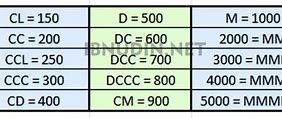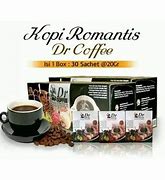
Peningkatan Efisiensi Operasional
Salah satu manfaat paling mencolok dari warehouse slotting adalah peningkatan efisiensi operasional. Dengan menempatkan barang-barang yang sering diambil di lokasi yang lebih mudah dijangkau, proses pengambilan barang menjadi lebih cepat dan efisien. Hal ini mengurangi waktu yang dibutuhkan untuk mengisi pesanan pelanggan dan mengirimkan produk, yang pada akhirnya menghemat waktu dan biaya operasional.
RFID (Radio-Frequency Identification)
RFID adalah teknologi yang memungkinkan perusahaan untuk melacak barang secara real-time menggunakan tag elektronik yang terpasang pada setiap barang atau kemasan. Dengan RFID, perusahaan dapat dengan cepat mengidentifikasi lokasi setiap barang dalam gudang dan memastikan bahwa barang-barang tersebut ditempatkan di lokasi yang tepat.
Penggunaan barcode scanning membantu dalam pengambilan dan pelacakan barang yang lebih efisien. Karyawan gudang dapat dengan cepat memindai barcode pada setiap barang untuk mengidentifikasinya dan memasukkannya ke dalam sistem WMS. Ini mengurangi kesalahan manusia dan meningkatkan akurasi stok.
Heavy Duty Slotting Machine Manufacturers
Working principle of slotting machine is very simple. In the slotting machine, work item is placed in a vertical position on the bed. And then cutting tools move in reciprocating action to perform the operation and shed the additional material from the work item. In the slotting machine cutting action is executed at the downward stroke to cut the extra piece or material from the work piece.
Working principle of slotting machine is very simple. In the slotting machine, work item is placed in a vertical position on the bed. And then cutting tools move in reciprocating action to perform the operation and shed the additional material from the work item. In the slotting machine cutting action is executed at the downward stroke.
To understand the working of slotting machine in a better way, Esskay machines the best slotting machine manufacturer will help to know the parts of slotting machines, and their importance in the operation of the slotter machine.
The bed is one of the most important parts of slotting machine and due to the required strength. slotting machine bed is made of cast iron.Bed of the slotting machine supports table, ram, column, etc.
The table is used to hold the work item and it is also made up of cast iron.Rotatory table of slotting machine is round in shape and places above the cross-slides. The rotation of table operated by power with the gear connected to under the table. Table of the slotting machine can be adjusted in the directions like longitude and crosswise
Ram is placed to support the reciprocating action ie forward and backwards. Ram also carries the cutting tool which performs the cutting operation in the vertical direction
Cross-slide movesin the parallel direction to the column. The movements of cross-slides controlled by hand or power supply
Saddles are build on the guideways and moved away from the column by manually or by power supply
Hand wheels support the rotation of the table while adjusting the work item.
Colum again is made of cast iron since it supports table, table and driving mechanism.
Punch slotting machine is a heavy duty machine basically designed for shedding large chunks of the amount of metal.
Tool room slotting machine operates to give finishing to the cuts. This machine operates at high speed but gives light cuts.
This is again heavy duty machinery where in base and frame are heavy and made up of cast iron.
Esskay Lathe and Machine Tools is one of the reputed and trusted slotting machine manufacturer who operates in Delhi, Mumbai, Pune and another region in India. Esskay is the trusted brand in the manufacturing of slotter machine, drilling machine , Lathe mahine, shapermachine, milling machine etc.
By: Daniel Duffy, Principal Analyst
You asked if any state considered legislation on slotting fees charged by grocery stores.
The term “slotting fee” describes a variety of fees retailers charge their suppliers. Generally, suppliers pay these fees under an agreement that guarantees the supplier shelf space for a particular period of time. Some fees are charged for the introduction of new products, some to maintain existing shelf space, and some to exclude a rival's products. The term is associated with fees paid to grocery stores, but slotting fees may charged by other types of retailers as well.
We identified a bill considered by California in 2005 and another currently pending in Massachusetts.
California's Senate Office of Research prepared a slotting fee background paper in January 2005. It describes how the fees are imposed, summarizes some Federal Trade Commission (FTC) work on the issue, and reviews the positions taken by supporters and critics of the fees.
California considered, but did not adopt, a bill on slotting fees in 2005 (SB 582). The bill was significantly revised before it died.
In its first version, the bill prohibited any retailer from imposing a slotting allowance or a pay-to-stay fee on a supplier without disclosing, clearly and unequivocally, the amount of the charge the retailer imposes on other suppliers for the placement of similar products (SB 582). It defined “slotting allowance” as a lump-sum payment for the placement of a product on a shelf and “pay-to-stay fee” as a fee for continued placement on a shelf.
In its second version, the bill required retailers, on request from a qualified supplier, to disclose (1) placement fees or arrangements charged for the placement of similar products and (2) all trade information for the placement of a similar product if (a) information about a specified product has been shared by the retailer with a manufacturer or supplier that neither supplies nor manufactures the product or (b) information about a product has been shared with the retailer by a supplier that neither supplies nor manufactures the product.
The bill defines (1) “placement fees or arrangements” as a promise of shelf space, specific shelf placement, guaranteed advertising, payment to keep a product on a shelf, slotting fees, or any other benefit; (2) “qualified supplier” as one who can supply the retailer with a product similar in character; (3) “shelf” as a specific location in a retail store where the product is offered for sale for more than five days; (4) “slotting fee” as a lump-sum fee for product placement on a shelf; and (5) “trade information” as all retail pricing, sales volume, and promotional information for all similar products within specific stores or a grouping of stores.
The 2007 Massachusetts bill, in the form of a proposed bill, prohibits slotting allowances from being charged by grocery stores (AB 324). It defines “slotting allowance” as an exchange of anything of substantial value in return for desirable shelf space. It received a public hearing in June.
CALIFORNIA BACKGROUND PAPER
The California Senate Office of Research prepared a background paper in 2005. It states that “there is no standard definition of the term “slotting fee,” but that it has been used to describe lump-sum fees paid for a new product introduction. It relies on certain FTC reports to state that it is difficult to determine the amount of or frequency with which slotting charges are imposed. The FTC surveyed seven retailers in 2003 and only one reported that it kept historical electronic records of slotting fees. The FTC concluded that even with retailers' cooperation, it is difficult to obtain historical data. As a result, the FTC states that “the frequency and overall amounts of slotting dollars reported by the retailers in this study may be lower than the actual incidence of slotting.”
Relying on a report issued by the Food Marketing Institute, the California report states that slotting fees are charged to (1) cover the costs of introducing a new product, (2) remove the item that previously occupied the shelf, and (3) recover the retailer's investment if the product fails.
Relying on another FTC report, the report states that slotting fees have been criticized for (1) increasing the cost of introducing new products, (2) adversely affecting smaller suppliers more than larger ones because larger suppliers are more likely to be able to afford paying them, (3) adversely affecting smaller retailers in favor of larger ones because smaller retailers cannot extract slotting fees from suppliers, and (4) reducing competition by stifling innovation and product variety.
From Wikipedia, the free encyclopedia
Fees charged for supply chain participation or retail space allocation
A slotting fee, slotting allowance,[1] pay-to-stay, or fixed trade spending[2] is a fee charged to produce companies or manufacturers by supermarket distributors (retailers) in order to have their product placed on their shelves or within their supply chain.[3][4] The fee varies greatly depending on the product, manufacturer, and market conditions. For a new product, the initial slotting fee may be approximately US$25,000 per item in a regional cluster of stores, but may be as high as US$250,000 in high-demand markets.[5]
In addition to slotting fees, retailers may also charge promotional, advertising and stocking fees. According to a Federal Trade Commission study, the practice is "widespread" in the supermarket industry.[6] Many grocers earn more profit from agreeing to carry a manufacturer's product than they do from actually selling the product to retail consumers. Fees may serve to efficiently allocate scarce retail shelf space, help balance the risk of new product failure between manufacturers and retailers, help manufacturers signal private information about potential success of new products, and serve to widen retail distribution for manufacturers by mitigating retail competition.[7] For vendors, slotting fees may be a move by the grocery industry to profit at their suppliers' expense.[8]
Some companies argue that slotting fees are unethical as they create a barrier to entry for smaller businesses that do not have the cash flow to compete with large companies. The use of slotting fees can, in some instances, lead to abuse by retailers such as in the case where a bakery firm was asked for a six figure fee to carry its items for a specific period with no guarantee its products would be carried in future periods.[9]
The same practice is also common in major bookstore chains in the US, dating from as far back as the mid-nineties.[10]
Tìm Người Yêu: Những Câu Chuyện Thành CôngTìm Người Yêu: Những Câu Chuyện Thành Công” là một chủ đề thú vị và đầy cảm hứng, đặc biệt trong bối cảnh hiện đại khi công nghệ và mạng xã hội ngày càng phát triển. Những câu chuyện thành công về hành trình tìm kiếm người yêu thường mang đến hy vọng và niềm tin cho những ai vẫn đang trên con đường tìm kiếm nửa kia của mình. Có người gặp được tình yêu đích thực qua một ứng dụng hẹn hò trực tuyến, người khác lại tìm thấy người bạn đời của mình trong một... Tìm Người Yêu: Những Câu Chuyện Thành CôngTìm Người Yêu: Những Câu Chuyện Thành Công” là một chủ đề thú vị và đầy cảm hứng, đặc biệt trong bối cảnh hiện đại khi công nghệ và mạng xã hội ngày càng phát triển. Những câu chuyện thành công về hành trình tìm kiếm người yêu thường mang đến hy vọng và niềm tin cho những ai vẫn đang trên con đường tìm kiếm nửa kia của mình. Có người gặp được tình yêu đích thực qua một ứng dụng hẹn hò trực tuyến, người khác lại tìm thấy người bạn đời của mình trong một buổi gặp gỡ bạn bè. Mỗi câu chuyện đều có những điểm chung là sự kiên nhẫn, niềm tin và lòng chân thành. Qua những câu chuyện này, chúng ta thấy rằng tình yêu không phân biệt tuổi tác, khoảng cách hay hoàn cảnh. Điều quan trọng là mỗi người đều có cơ hội tìm thấy tình yêu đích thực của mình, chỉ cần họ mở lòng và tin tưởng vào những điều tốt đẹp sẽ đến.Một trong những câu chuyện đáng nhớ là câu chuyện của Minh và Lan. Cả hai gặp nhau qua một ứng dụng hẹn hò trực tuyến, nơi họ bắt đầu bằng những cuộc trò chuyện đơn giản. Minh, một chàng trai trầm lắng và ít nói, đã dần dần mở lòng trước sự chân thành và ấm áp của Lan. Sau vài tháng trò chuyện, họ quyết định gặp nhau ngoài đời thực. Cuộc gặp gỡ đầu tiên tại một quán cà phê nhỏ đã trở thành điểm khởi đầu cho một mối quan hệ đẹp đẽ và lâu bền. Sự đồng điệu về sở thích và quan điểm sống đã giúp Minh và Lan xây dựng nên một tình yêu vững chắc, vượt qua mọi khó khăn và thử thách.Không chỉ có Minh và Lan, câu chuyện của Hùng và Mai cũng là một minh chứng cho việc tình yêu có thể đến từ những nơi bất ngờ nhất. Hùng và Mai gặp nhau trong một chuyến du lịch nhóm tổ chức bởi công ty. Ban đầu, họ chỉ xem nhau như những người bạn cùng đi du lịch, nhưng qua những hoạt động chung và những cuộc trò chuyện, họ dần nhận ra sự hòa hợp đặc biệt. Sau chuyến du lịch, Hùng quyết định tỏ tình với Mai và may mắn thay, cô cũng có tình cảm với anh. Họ đã cùng nhau vượt qua khoảng cách địa lý và xây dựng nên một mối tình bền chặt.Những câu chuyện này không chỉ là những minh chứng sống động cho sự tồn tại của tình yêu đích thực, mà còn mang lại niềm tin và hy vọng cho những ai vẫn đang tìm kiếm người bạn đời của mình. Dù là qua mạng xã hội, trong các chuyến du lịch hay trong những buổi gặp gỡ bạn bè, tình yêu có thể đến từ những nơi bất ngờ nhất và vào những thời điểm mà chúng ta không ngờ tới. Điều quan trọng là mỗi người cần mở lòng, kiên nhẫn và tin tưởng vào những điều tốt đẹp sẽ đến.Tình yêu không phân biệt tuổi tác, khoảng cách hay hoàn cảnh. Mỗi người đều có cơ hội tìm thấy tình yêu đích thực của mình, chỉ cần họ sẵn sàng mở lòng và tin tưởng vào hành trình tìm kiếm tình yêu của mình. Những câu chuyện thành công này là minh chứng rõ ràng nhất cho việc tình yêu đích thực vẫn tồn tại và luôn chờ đợi chúng ta tìm thấy. Xem thêm.
Slotting machines - devices for processing various internal and external surfaces, mainly keyways.
Perangkat Lunak Manajemen Gudang (WMS)
Perangkat lunak manajemen gudang adalah alat yang sangat penting dalam proses warehouse slotting. WMS mengintegrasikan data dan menyediakan visibilitas ke dalam operasi gudang. Dengan WMS, perusahaan dapat melacak stok, memantau pergerakan barang, dan mengoptimalkan tata letak gudang berdasarkan data aktual. Hal ini juga memungkinkan perusahaan untuk mengelola pesanan dengan lebih efisien dan menghindari kesalahan stok.
Perubahan Regulasi dan Kebijakan
Perubahan dalam regulasi atau kebijakan perusahaan juga dapat memengaruhi tata letak gudang. Misalnya, perubahan dalam kebijakan keselamatan atau lingkungan dapat mengharuskan perusahaan untuk menyesuaikan cara penyimpanan barang.
Simulasi dan Optimisasi
Teknologi simulasi dan optimisasi memungkinkan perusahaan untuk menciptakan model gudang virtual yang dapat diuji untuk mengidentifikasi tata letak yang paling efisien. Ini membantu perusahaan dalam merencanakan perubahan tata letak tanpa mengganggu operasi sehari-hari.
Clustering Algorithms
Algoritma clustering digunakan untuk mengelompokkan produk yang sering diambil bersama-sama. Barang-barang yang sering diambil bersama ditempatkan di lokasi yang dekat satu sama lain untuk mengurangi perjalanan karyawan gudang.
Algoritma genetik adalah metode berbasis komputasi yang dapat menghasilkan solusi tata letak gudang yang optimal dengan menggunakan prinsip-prinsip evolusi. Algoritma ini menghasilkan berbagai solusi yang berbeda dan menggabungkan elemen-elemen terbaik dari setiap solusi untuk menciptakan tata letak yang lebih baik.
Algoritma Simulated Annealing mirip dengan algoritma genetik tetapi bekerja dengan cara yang sedikit berbeda. Ini mencoba berbagai perubahan dalam tata letak gudang dan menggunakan metode perpendinginan untuk menerima atau menolak perubahan tersebut berdasarkan peningkatan atau penurunan kualitas solusi.
Pengurangan Biaya Transportasi Internal
Dengan menempatkan barang-barang yang sering diambil lebih dekat ke pintu keluar gudang, perusahaan dapat mengurangi biaya transportasi internal. Ini termasuk biaya penggunaan forklift, trolley, dan tenaga kerja yang diperlukan untuk memindahkan barang dari satu tempat ke tempat lain di dalam gudang. Ini membantu menghemat biaya operasional dan waktu.
IoT (Internet of Things)
IoT memungkinkan perusahaan untuk menghubungkan perangkat dan peralatan gudang ke internet. Ini memungkinkan pemantauan real-time dari peralatan, suhu, kelembaban, dan kondisi lain yang dapat memengaruhi stok. Misalnya, sensor IoT dapat memberi tahu jika ada perubahan suhu yang dapat memengaruhi kualitas produk.
Peningkatan Produktivitas Karyawan
Dengan mengurangi waktu yang dibutuhkan untuk mencari dan mengambil barang, karyawan gudang dapat bekerja dengan lebih produktif. Mereka dapat fokus pada tugas-tugas yang lebih penting daripada mencari stok di dalam gudang.























